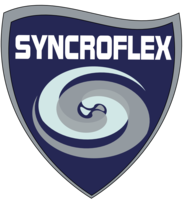SCIENCE
Hyaluronan (also called hyaluronic acid or hyaluronate or HA) is an anionic, nonsulfated glycosaminoglycan distributed widely throughout connective, epithelial, and neural tissues. It is unique among glycosaminoglycans in that it is nonsulfated, forms in the plasma membrane instead of the Golgi, and can be very large, with its molecular weight often reaching the millions Until the late 1970s, hyaluronan was described as a "goo" molecule, a ubiquitous carbohydrate polymer that is part of the extracellular matrix.
First clinical scientific study for oral absorption of high molecular weight hyaluronic acid http://pubs.acs.org/doi/pdfplus/10.1021/jf8017029
For example, hyaluronan is a major component of the synovial fluid, and was found to increase the viscosity of the fluid.
Along with lubricin, it is one of the fluid's main lubricating components. Hyaluronan is an important component of articular cartilage, where it is present as a coat around each cell (chondrocyte).
When aggrecan monomers bind to hyaluronan in the presence of link protein, large highly negatively-charged aggregates form.
These aggregates imbibe water and are responsible for the resilience of cartilage (its resistance to compression).
The molecular weight (size) of hyaluronan in cartilage decreases with age, but the amount increases. Hyaluronan is also a major component of skin, where it is involved in tissue repair. When skin is exposed to excessive UVB rays, it becomes inflamed (sunburn) and the cells in the dermis stop producing as much hyaluronan, and increase the rate of its degradation.
Hyaluronan degradation products then accumulate in the skin after UV exposure.
While it is abundant in extracellular matrices, hyaluronan also contributes to tissue hydrodynamics, movement and proliferation of cells, and participates in a number of cell surface receptor interactions, notably those including its primary receptors, CD44 and RHAMM.Upregulation of CD44 itself is widely accepted as a marker of cell activation in lymphocytes. Although hyaluronan binds to receptor CD44, there is evidence hyaluronan degradation products transduce their inflammatory signal through toll-like receptor 2 (TLR2), TLR4 or both TLR2, and TLR4 in macrophages and dendritic cells. TLR and hyaluronan play a role in innate immunity.
HYDROLYZED COLLAGEN PEPTIDES VS. CHONDROITIN SULFATE
90% VS. 15- 20% ABSORPTION
The hydrolysis process results in reducing the collagen proteins from about 500,000 Dalton (molecule size, unit Da) into small peptides having an average molecular weight between 2000 and 5000 Da.
The collagen hydrolysate used in SYNCROGUARD is of the very highest quality and cosmetic grade with a maximum molecule size of
1000 Da which ensures to maximise the efficiency and absorbability of the supplement.
The bioavailability of hydrolyzed collagen was demonstrated in several clinical studies which have conclusively proven that collagen peptides are digested and absorbed of more than 90% within 6 hours, with measurable accumulation in the cartilage and skin.
In comparison, the bioavailability of chondroitin sulfate ranges only from 15% to 24% of the orally administered dose. More particularly, on the articular tissue, Ronca et al. reported that chondroitin sulfate is not rapidly absorbed in the gastro-intestinal tract!
